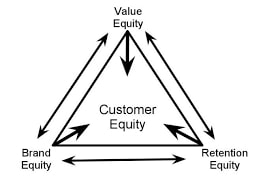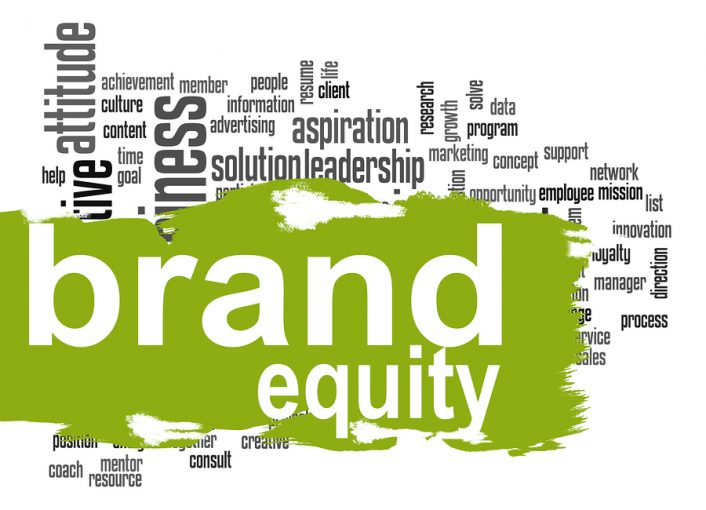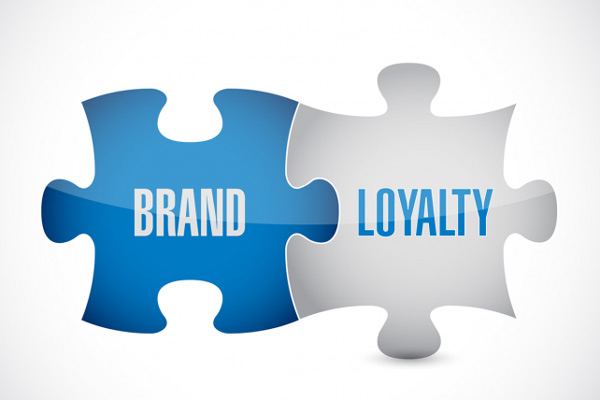What Is Customer Equity? Why Is It Important?
What is Customer Equity? In customer relations, the closer you are to your customers, the more loyal customers will be to your brand. How important is customer equity or client equity to the business?
Probably wandering around marketing forums from time to time, you have come across the concept of Customer equity. So what is the definition of customer equity? how can we apply Customer equity to the reality of the business?
The following article will answer all the problems related to customer equity with practical application with visual illustrations, which can hopefully help you better grasp this term’s concept and application.
What exactly is customer equity?
By basic definition, Customer Equity is the result of customer relationships. It is the sum of the lifetime discounted value of all customers.
In plain words, the more loyal your customer is to you, the more assets you have from your customer. Companies or large corporations like Apple, Samsung have very high customer equity, their competitive advantage is higher than other, more sustainable competitors.
In theory, Customer equity can be understood as the future business value that the business can derive from the company’s customers. Firms with high customer equity have a higher valuation than firms with low customer equity.
Customer equity can be calculated using this simple formula:

Where LTV is Lifetime Customer Value: This is the value a customer pays for your company’s products over their lifetime. The source of long-term and sustainable profits for businesses comes from a loyal customer base because the customer life cycle value is very high.
Viral Coefficient is the number of new users that existing users create.
Customer equity is calculated as the value that a client of the company can bring in their lifetime. If in a month I spend a million dong on Lotte Mart, a year is 12 million VND. When I have a small child, 3 years later, the value I bring to Lotte Mart is 15 million VND/year. As I get older, I will buy more. And with such thinking, the value that I bring to Lotte Mart is much higher than the value of 1 million VND/month.
This reminds us that, when we lose a customer (for some distracting reason), stop them from coming back, we don’t just lose 1 million VND in sales per month, which is a much more frightening figure - the amount of money that person spent his entire life on going to the supermarket.
When applying Customer equity into practice, it is important to group your customers into different groups to study, including new customers, loyal customers, customers who use less, customers who use a lot. All of these groups are profitable for the company and completely different. We not only learn how to do it later so that new customers start buying from us, but we also have to do later to let customers buy less, buy more, loyal customers become loyal and use more of our company.
And so, Customer equity reminds us that we don’t just have new customers. When developing a marketing strategy, 4P must also remember both current customers and do it later to increase the value that each of these customers brings.
What is the customer equity model?

There are three drivers of Customer equity namely: Value equity, Brand Equity, and Relationship equity.
Value equity
The customer assessments of what the company has to offer in the marketplace is based on the customer’s willingness to sacrifice what it gets. A business scores high when it satisfies preferences, price, and convenience.
McDonalds is one of those businesses with a high customer equity; it has fast food everywhere, its price is reasonable.
Brand equity
A cake priced at 50$ may freak out, but with a cake cooked by a 5-star chef yourself, you’re willing to pay. Why is that? It is up to the brand to decide your choice.
A brand with great value is the brand that creates customer confidence. That is the value for which the business is successful. Brand is not only about customer perception; it goes beyond that.
Relationship equity
A fair relationship is that the customer will stay with the preferred brand rather than switching to any other organization. In a good brand, customers will not pay attention to the programs, advertisements, or competitors’ promotions. Ensuring fairness in the relationship between customers and brands takes time and the right strategy to build.
Depending on the industry and size, managers need to consider which factor is the most crucial in making customers, increasing sales, and improving the brand.
Why is customer equity important?
-
Customer equity is such a topic in the running of a company, especially with effects on customer equity in a variety of ways. If you want to determine your customer equity metric, it takes some time.
-
It is combined with other metrics in business marketing. It is one of the indicators to evaluate the effectiveness of a campaign.
-
Customer equity can be used to estimate your future ROI. Customer equity doesn’t just appreciate performance when you can’t interfere with marketing or tactics to drive future value.
-
Customer equity is a measure seldom geared toward in a business strategy.
-
It’s quite a pity that a lot of marketers tend to be very scared of numbers because while value can take quite a bit of work to calculate the overall results to come to the right conclusion, it’s not too hard.
-
In essence, it becomes a lot more interesting when statistical methods are applied to computation because probability theory can be applied and uncertainty, a much more powerful management tool, far more than just going to the points.
Customer equity vs Brand equity: What’s the difference?
What is brand equity?

Brand equity is a marketing term used to refer to the value of a brand. These values are determined by customer perceptions and their experiences associated with that brand.
If the brand awareness is large, that means that the value of the brand is “positive”. If they show frustration and have bad experiences when using the brand’s products / services, it can cause the brand’s value to decrease, reaching the “negative” index.
A brand with positive value can bring the business:
-
Enterprises can raise selling prices for products / services, when the brand reaches high value in the eyes of customers.
-
That value can translate into a product / service line related to the main brand. That helps businesses make money, instead of having only one source of revenue coming from just a single product.
-
In addition, it also makes sense to promote the stock value of the business.
Relationship between Brand equity and Customer equity

Over the past 30 years, Brand equity and Customer equity are two quite important concepts that have been studied in the academic world as well as in practice. Until 2005, an article called “Linking Brand Equity to Customer Equity” was born to find the connection between these two concepts.
According to this group of authors, these 2 concepts have a causal relationship. A strong brand means a brand that has many customers offering high value. And a brand with many customers that bring high value is a strong brand. Both of the above concepts refer to a fundamental goal that is customer loyalty or in other words: the ultimate goal of marketing activities is to create, maintain, and grow relationships. contact with customers.
Brand equity-oriented approach is suitable for products where consumers cannot interact directly with manufacturers, for example FMCG when they buy products through distributors or retailers. And Customer equity is suitable for the industries where manufacturers have the opportunity to directly interact with customers such as banks, supermarkets, telecommunications.
Through the years, customers may come and go, but strong brands will endure. The customer is also an asset to us, but we cannot control it. Meanwhile, the brand is something that we can handle well.
Loyal customers are the ultimate goal of the company, but in reality it is very difficult to achieve. But according to the Double Jeopardy theory, customer loyalty is only the result of a brand with many customers. Therefore, we should start from the goal of building a strong brand instead of starting with the customer.
In fact, both Brand equity or Customer equity are very difficult to accurately calculate. And today in the mergers or acquisitions of companies, only Brand equity is calculated, but no one has counted Customer equity. Partly because the new customer equity has been around for about 10 years, the other part is because there is always a relationship between Brand equity and Customer equity.
Conclusion
With the content of the above article, you may have a basic understanding of what is Customer equity. This is quite an important metric in evaluating the effectiveness of the campaign. And other factors constituting Customer equity also need to be considered.
New Posts






